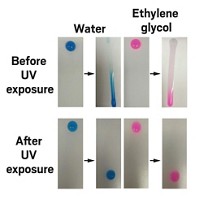Advertisement
Grab your lab coat. Let's get started
Welcome!
Welcome!
Create an account below to get 6 C&EN articles per month, receive newsletters and more - all free.
It seems this is your first time logging in online. Please enter the following information to continue.
As an ACS member you automatically get access to this site. All we need is few more details to create your reading experience.
Not you? Sign in with a different account.
Not you? Sign in with a different account.
ERROR 1
ERROR 1
ERROR 2
ERROR 2
ERROR 2
ERROR 2
ERROR 2
Password and Confirm password must match.
If you have an ACS member number, please enter it here so we can link this account to your membership. (optional)
ERROR 2
ACS values your privacy. By submitting your information, you are gaining access to C&EN and subscribing to our weekly newsletter. We use the information you provide to make your reading experience better, and we will never sell your data to third party members.
Materials
RepeatedIcing Puts The Freeze On Ice-Repellent Surfaces
Surface properties may limit anti-icing nature of superhydrophobic materials
by Bethany Halford
December 20, 2010
| A version of this story appeared in
Volume 88, Issue 51
A new study is throwing cold water on the idea that superhydrophobic surfaces are effective at repelling ice (Langmuir,10.1021/la104). Researchers led by Sergei A. Kulinich of the University of Quebec, Chicoutimi, have performed a systematic study of rough superhydrophobic surfaces to see how the materials hold up over time and under various conditions. Such materials have previously been reported to repel ice by causing water to bead up and roll off their micro- and nanotextured surfaces before it ever has a chance to freeze. Kulinich’s group found that this ice-repellent behavior gradually diminishes with repeated icing and deicing cycles as the ice apparently damages the surface micro- and nanostructures. Furthermore, they found that the anti-icing materials did not perform well in humid environments where water was concentrated throughout the rough surfaces. “This work thus shows that superhydrophobic surfaces are not always ice-repellent and their use as anti-ice materials may therefore be limited,” the researchers note.





Join the conversation
Contact the reporter
Submit a Letter to the Editor for publication
Engage with us on Twitter